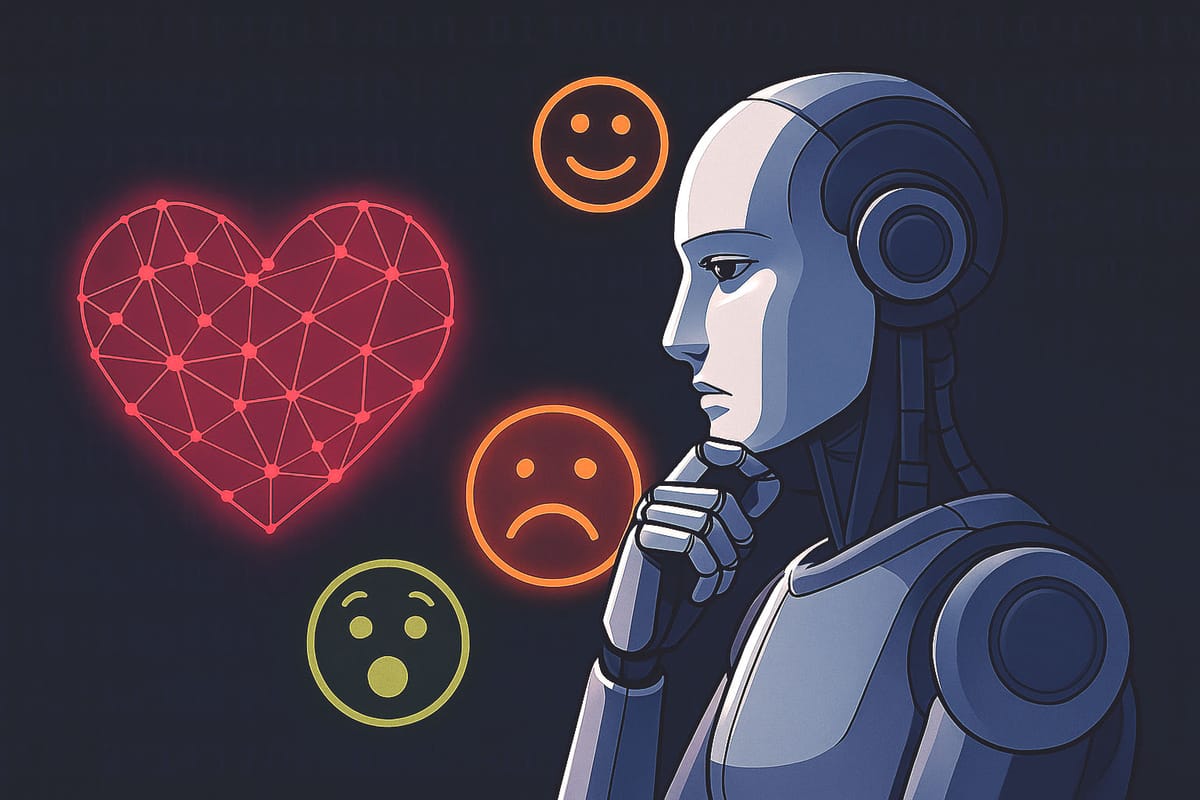
By: Teddy Nedelcu | WBN News Vancouver | June 25, 2025
A chatbot's warm apology or a game robot's desperate scream can feel uncannily real. Yet every line is just 1s and 0s racing through a vast, trained web of weights.
How LLMs Encode Meaning
Large language models break words into numbers, push them through millions of weighted links, and predict the next number. Those weights are statistical echoes of humanity's texts, not lived sensation. Train the web differently and describing an orange could evoke agony instead of citrus delight. See the OpenAI GPT-4 Technical Report.
Sensors vs Symbols
Humans route pain, pleasure, fear, and joy through nerves that connect straight to emotion centres, then back to thought and even physical responses such as sweat. Today's AIs lack that physical loop. They describe nausea because their data binds the word to symptoms, not because lines of code clench in a virtual gut. DeepMind's work on synthetic affect illustrates this gap.
Simulation or Sentience?
If engineers ever wire continuous sensory streams and self‑modifying drives into a model, the line between imitation and experience will blur. Until there is an unbroken chain from stimulus to feeling to memory, AI emotion remains an elaborate act.
At what point does simulation become reality?
Lucian Nedelcu (Teddy), IT consultant
📧 teddyn@teddytech.net
📱 Signal (secure): @teddy.59
🔗 Linkedin: teddynedelcu
TAGS: #AI #Machine Learning #Emotional Intelligence #Digital Consciousness #Ethics in AI #Synthetic Affect #teddytech #teddy nedelcu #WBN AI Edition


